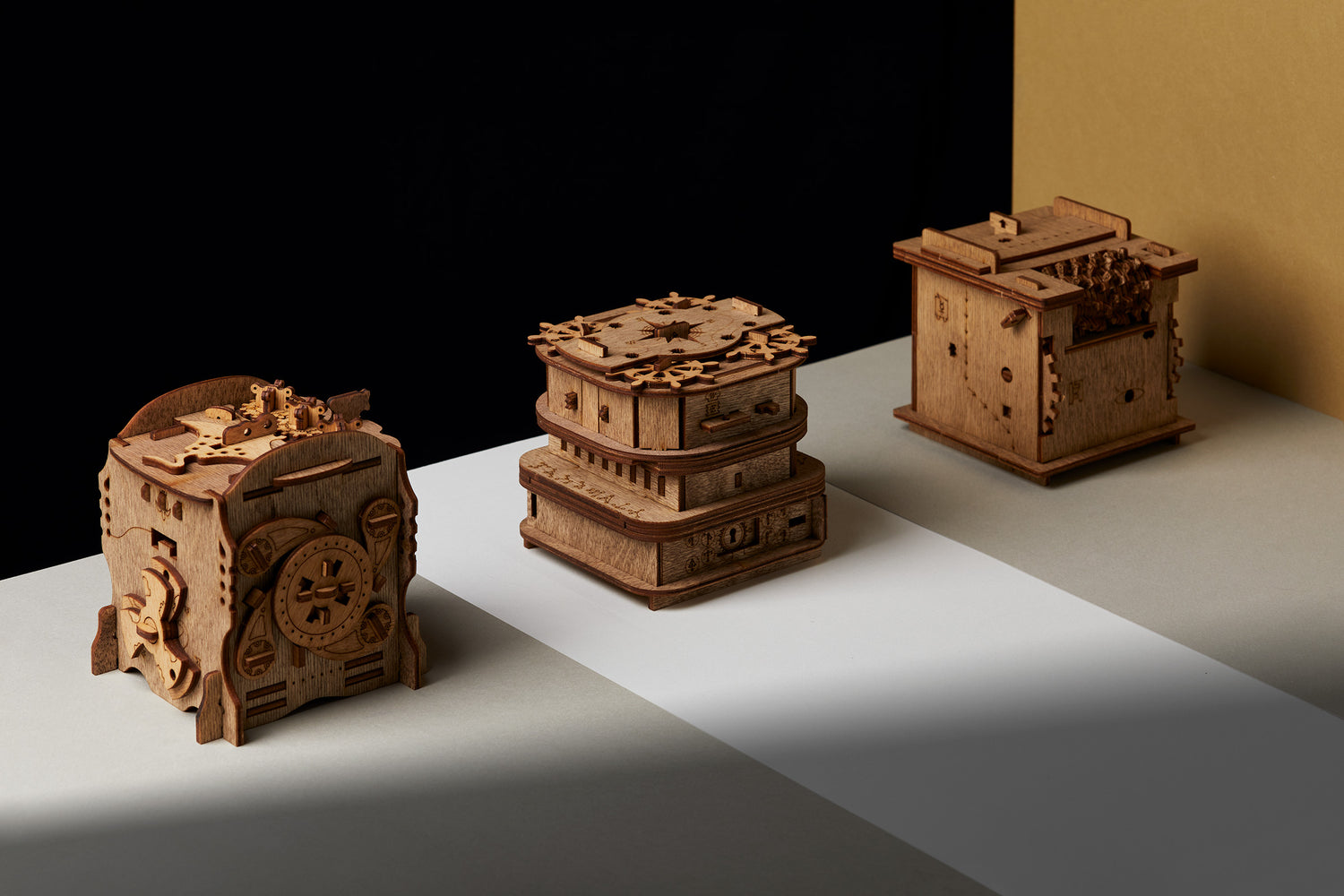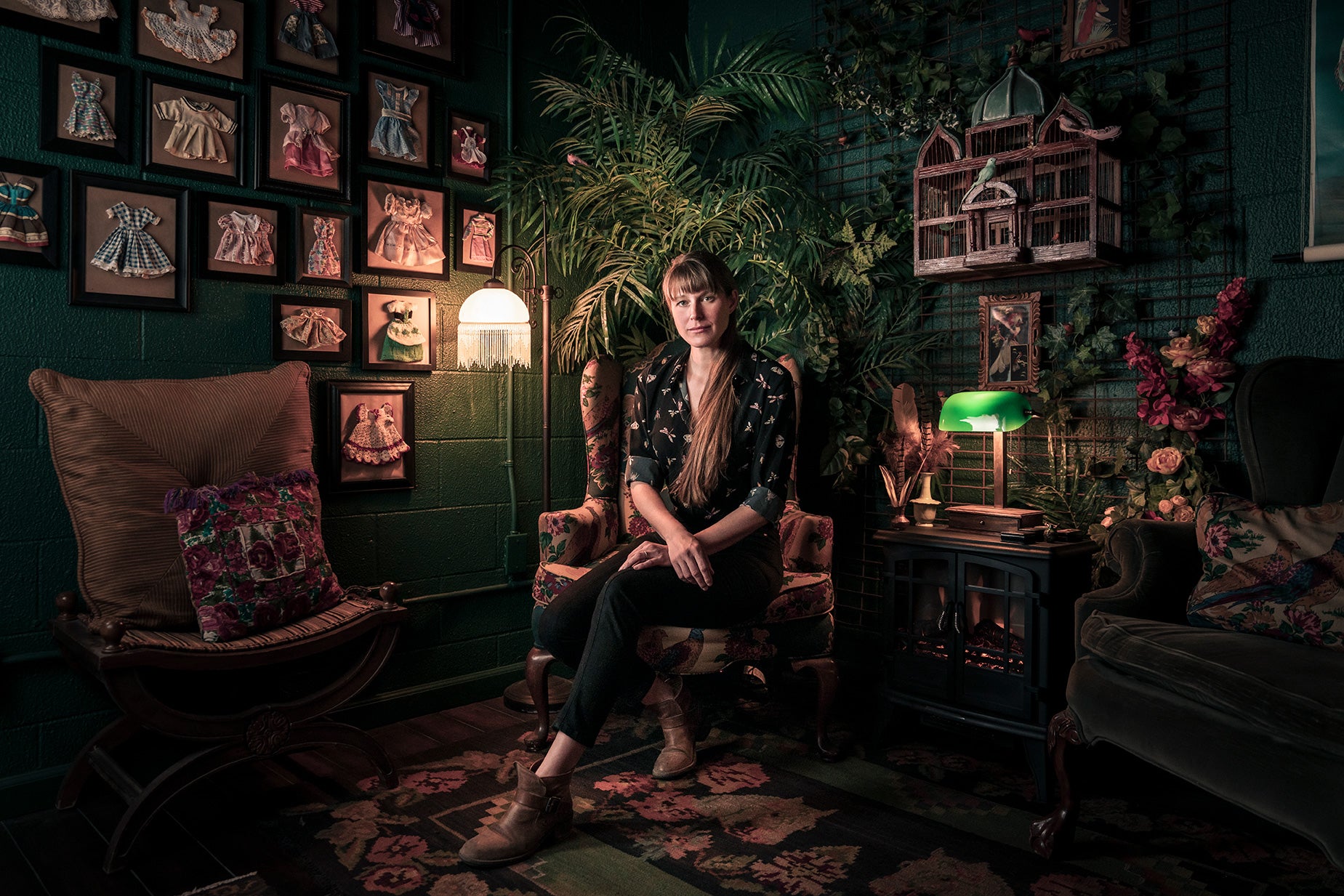My favorite type of puzzle box is one that feels a bit like an escape room, with the kind of sequential discovery where there are knobs to turn, levers to pull, and cryptic symbols to interpret. You’re simultaneously deciphering clues in the design and discovering new tools that are used in later steps. The Cluebox puzzle series captures that escape room experience, so it comes as no surprise to hear that publisher iDventure started out as a company with escape-room-style board games.
With their first Cluebox, “Schrödinger’s Cat,” the designers wanted to pack those same enthralling moments of discovery into a wooden box that could be produced at an accessible price point. They also sought to differentiate themselves from other puzzle boxes, which may have no apparent moving pieces or locks—the mental equivalent of a climber approaching a smooth wall of rock with no obvious starting toehold. For newcomers, this can be very frustrating, because until an initial aha! moment, a solver might make no progress for minutes, hours, or days.
“If they don’t have a good visible clue of what to do ... they will try to kill the box.”
Clueboxes avoid that frustration. They have a clear first step—literally, the word “Start” indicates where to focus at the beginning—and lines traced around the puzzle show how sections connect to each other. “Initially the third box, [‘Nautilus’], was designed to have multiple possible starting points,” says Alexander Krys, one of the creators of the Cluebox series. “But we got feedback that people wanted a start indicator [like on the first two], so we added that for one of the paths.”
That kind of design affordance leads to a solving process which is not necessarily easy, but gives a steady stream of satisfying discoveries and a sense of progression—with a corresponding dopamine hit as each step of the puzzle is solved.
When developing a box, Krys says the team starts by first trying out different mechanisms. “When we do games, we start with a story, and based on the story we build puzzles, [but for boxes], we work on nice mechanisms, and see how we can incorporate all the mechanisms together so there is logic linking them,” he explains. “Then we think of the story and design. We always have a raw version of the puzzle with just mechanisms, then we add the story and start adjusting the mechanisms to give them the shape of the story.”
Take, for instance, the manta ray-shaped piece in “Nautilus.” For puzzle purposes, it doesn’t need to be that precise shape, but molding the mechanism to the story provides a pleasing blend of aesthetics and utility.
It generally takes 60 to 90 minutes to solve a Cluebox. To achieve that, iDventure drew on other escape room principles, like “gating,” i.e., clarifying what pieces are in play, and “signposting,” which helps indicate what pieces of the puzzle are related to each other. “People need to know what they need to do,” Krys says. “If they don’t have a good visible clue of what to do, first off they will be frustrated, second they will try to kill the box.”
Even with a few designs under their belt, prototyping remains a must before producing thousands of copies. “If something is unstable, or if we know that it will be difficult in production to assemble the box, it might be a no-go factor,” Krys says. “We have some mechanisms we tried to fit in, but couldn’t make reliable. ‘Nice mechanism, goodbye,’ because it is too small to work.”
A key part of the player experience is how smoothly a puzzle works, which is especially tricky with tight tolerances. Despite iDventure focusing on quality control during assembly, sometimes issues are only discovered later. Krys mentions how with “Nautilus” some customers received their box with the first stage of the puzzle box already solved. “It was really surprising!” he says, explaining how that stage is usually solved in seven to eight moves. “I was blaming quality control—that they weren’t locking the box. But then we took a box and started shaking it and … shake shake shake … it was opening! This is crazy.”
Luckily, the fix was simple. After adding a sticker to hold one piece in place, the iDventure team introduced a more, er, robust form of testing (read: throwing packages at the wall and shaking them vigorously).
As for what’s next for Cluebox, Krys is understandably coy. He’s happy to share that their next Kickstarter will reveal not one but two new boxes. He does mention one will be designed as a traditional Cluebox. When asked if the other might push the envelope with new shapes and materials, he offers an intriguing: “You’ll see.”
Words by Brett Kuehner





Leave a comment
This site is protected by hCaptcha and the hCaptcha Privacy Policy and Terms of Service apply.